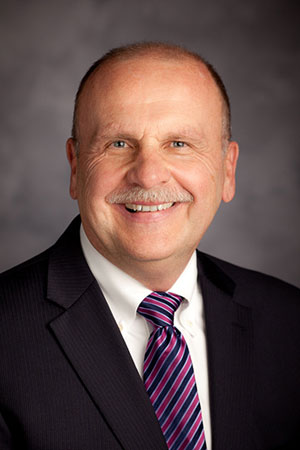REFLECTIONS ON AN EXPERIMENT IN DEMOCRACY of the newsletter refers to the federal election in November 2018 that will determine the composition of both the House and the Senate, beginning in 2019. As in previous contests that have been conducted since 2010, the Patient Protection and Affordable Care Act (ACA) of 2010 has the potential to influence the outcome. Not a single Republican in either chamber voted in favor of the ACA when it became law. Many candidates of that political party also chose to focus on its negative aspects when vying for office in the elections of 2012, 2014, and 2016. From the time of its inception, multiple attempts also have been made in Congress to repeal and replace this legislation.
Upon assuming the majority in both chambers and taking control of the White House after the 2016 election, Republicans appeared to be in a strong position to achieve their objective of eliminating this law. They came close to doing so in 2017, but the ACA remains in effect and many Democrats are using that fact as a basis for attacking Republicans in the upcoming November 2018 election. A key feature of the ACA is that it eliminated the ability of insurance companies to prohibit patients with preexisting conditions either from obtaining coverage or by requiring them to pay exorbitantly priced premiums for such protection. The Democrat’s message in the present election cycle is: Republicans intend to return to the days when insurers possessed such power and Democrats pledge to prevent them from doing so.
Employers’ Reimbursement Arrangements To Provide Health Coverage For Employees
Meanwhile, the Departments of Labor, Health and Human Services, and the Treasury proposed new rules in the October 29, 2018 issue of the Federal Register pertaining to how employers may use health reimbursement arrangements (HRAs) to provide health coverage to employees. The rule would expand the uses of HRAs to include payment of premiums for individual market coverage in some instances. The Departments estimate that the proposed changes would have an impact on coverage for approximately 10.7 million individuals, decrease the number of uninsured by 800,000, and cost the federal government approximately $30 billion in lost tax revenue from 2020-2028. The proposed rule was issued in compliance with an October 2017 Executive Order on “Promoting Healthcare Choice and Competition Across the United States,” suggesting that these changes would help make coverage more affordable for small to mid-sized employers and provide employees with more coverage options. Public Comments can be submitted for 60 days after publication of the rule.
Access To Health Care For Low-Income Adults With & Without Medicaid Expanded Eligibility
Low-income adults in states that expanded Medicaid under the Affordable Care Act were less likely to report having any unmet medical needs compared with those in non-Medicaid expansion states, according to a Government Accountability Office (GAO) report released on October 15, 2018. Among other findings:
About 26 percent of low-income adults in Medicaid expansion states reported having unmet medical needs compared to 40 percent in non-expansion states.
About 9.4 percent of low-income individuals in Medicaid expansion states said that they passed up needed medical care in the past 12 months because they couldn't afford it compared to 20 percent in non-expansion states.
About 82 percent of low-income adults had a usual place of care in Medicaid expansion states compared to 68 percent in non-expansion states.
Health and Workplace Benefits Survey (WBS) Results
The EBRI/Greenwald & Associates Health and Workplace Benefits Survey (WBS) of 1,025 workers in the United States ages 21–64 was conducted in June 2018. Among its main findings: (1) Workers rank health care as the most critical issue in the nation, (2) One-half of workers describe the health care system as poor (22 percent) or fair (28 percent), (3) Confidence about the health care system is mixed and declines looking into the future, and (4) Thirty-four percent of workers say they are confident that they are able to afford health care without financial hardship today, but this percentage decreases to just 30 percent when they consider the next 10 years.
More Articles from TRENDS October 2018
MICROBIOME’S OMNIPRESENT UNSEEN GUESTS
The Microbiome is one of many layers that have an impact on the interaction between patients and their health caregivers. Read More
PRESIDENT’S CORNER—ASAHP MEMBER FOCUS
Patricia Prelock, Professsor and Dean of the College of Nursing and Health Sciences at the University of Vermont, is featured in this issue of TRENDS. Read More
REFLECTIONS ON AN EXPERIMENT IN DEMOCRACY
The three branches of the federal government function cooperatively in many instances to meet the needs of the populace. Read More
DEVELOPMENTS IN HIGHER EDUCATION
The U.S. Department of Education announced negotiated rulemaking for accreditation and innovation, while final Department regulations for borrower defense and gainful employment are delayed. Read More
QUICK STAT (SHORT, TIMELY, AND TOPICAL)
U.S. Adults Who Should Take Statins For Heart Disease Prevention Fail To Do So
Fast Food Consumption By U.S. Adults
Use of Biological Swimmers As Cargo Delivery Agents In Blood
Novel Devices For Studying Acute And Chronic Mechanical Stress In Retinal Pigment Epithelial Cells Read More
AVAILABLE RESOURCES ACCESSIBLE ELECTRONICALLY
2017 National Healthcare Quality And Disparities Report
Interoperability Among Health Care Technologies
Enhancing High Schools As A Driver Of Individual Mobility And Community Progress Read More
GENDER PEER EFFECTS IN DOCTORAL STEM PROGRAMS
Peer gender composition in the training process of stem doctoral degrees is discussed. Read More
IDENTIFICATION OF FITNESS TRENDS FOR 2019
An American College of Sports Medicine Survey describes top fitness trends for 2019, with wearable technology being in the first position. Read More



